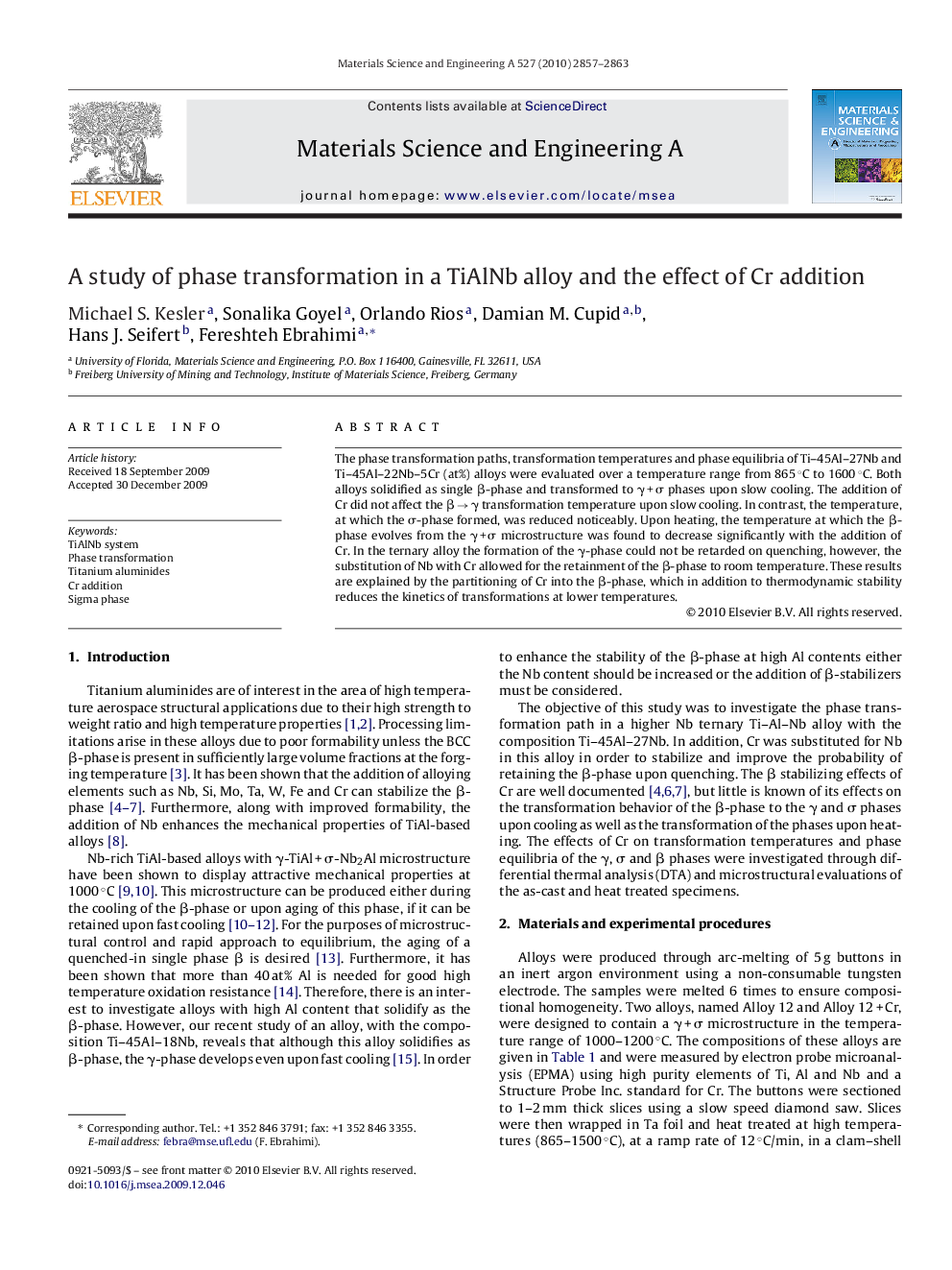| Article ID | Journal | Published Year | Pages | File Type |
|---|---|---|---|---|
| 1580339 | Materials Science and Engineering: A | 2010 | 7 Pages |
Abstract
The phase transformation paths, transformation temperatures and phase equilibria of Ti-45Al-27Nb and Ti-45Al-22Nb-5Cr (at%) alloys were evaluated over a temperature range from 865 °C to 1600 °C. Both alloys solidified as single β-phase and transformed to γ +Â Ï phases upon slow cooling. The addition of Cr did not affect the β â γ transformation temperature upon slow cooling. In contrast, the temperature, at which the Ï-phase formed, was reduced noticeably. Upon heating, the temperature at which the β-phase evolves from the γ +Â Ï microstructure was found to decrease significantly with the addition of Cr. In the ternary alloy the formation of the γ-phase could not be retarded on quenching, however, the substitution of Nb with Cr allowed for the retainment of the β-phase to room temperature. These results are explained by the partitioning of Cr into the β-phase, which in addition to thermodynamic stability reduces the kinetics of transformations at lower temperatures.
Related Topics
Physical Sciences and Engineering
Materials Science
Materials Science (General)
Authors
Michael S. Kesler, Sonalika Goyel, Orlando Rios, Damian M. Cupid, Hans J. Seifert, Fereshteh Ebrahimi,
